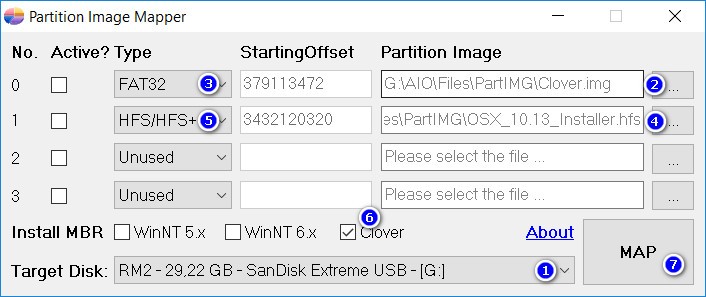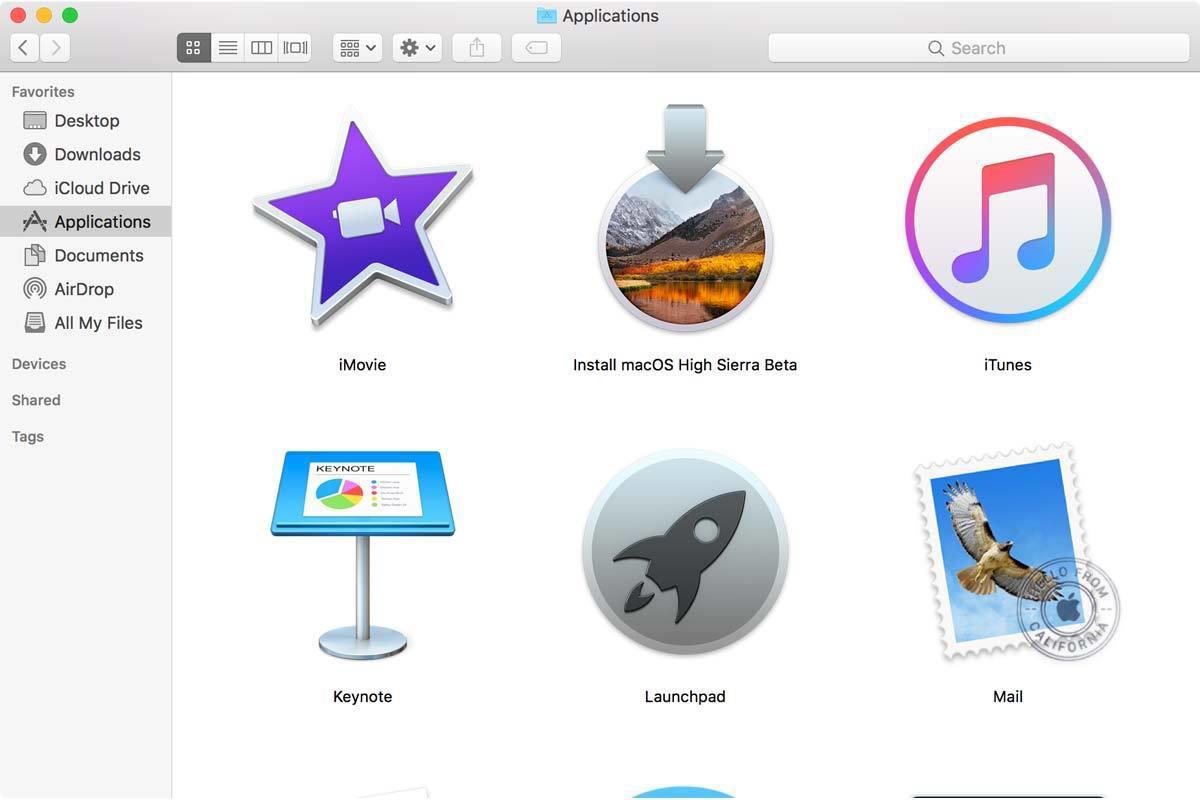- Mac High Sierra Usb Install
- Mac Os High Sierra Usb Installer Download
- Mac Os High Sierra Usb Installer
- Create Macos High Sierra Usb Installer Using Windows
Obviously, change “High Sierra.app” to whatever version you’re installing. To provide the application with a path to the volume that will be overwritten. In our case, this is /Volumes/Installer; To provide the application with a path to the installer package. For macOS Sierra, this is /Applications/Install macOS High Sierra.app. Note 2: Running Cmd+Shift+G in Finder will allow you to easily jump to /macOS-installer; From here, jump to Setting up the installer to finish your work. # Downloading macOS: Legacy OS. This method allows you to download much older versions of OS X, currently supporting all Intel versions of OS X(10.4 to current) Legacy macOS: Offline method. Therefore there are very few documentations regarding clean installation for Mac OS relative to Windows Reinstallation. In this tutorial, I would try to cover up as much detail I could to help you Reinstall a Clean Mac OS on to your Macbook or iMac. I recommend you to use 16GB or higher USB drive.
These advanced steps are primarily for system administrators and others who are familiar with the command line. You don't need a bootable installer to upgrade macOS or reinstall macOS, but it can be useful when you want to install on multiple computers without downloading the installer each time.
What you need to create a bootable installer
- A USB flash drive or other secondary volume formatted as Mac OS Extended, with at least 14GB of available storage
- A downloaded installer for macOS Big Sur, Catalina, Mojave, High Sierra, or El Capitan
Download macOS

- Download: macOS Big Sur, macOS Catalina, macOS Mojave, or macOS High Sierra
These download to your Applications folder as an app named Install macOS [version name]. If the installer opens after downloading, quit it without continuing installation. To get the correct installer, download from a Mac that is using macOS Sierra 10.12.5 or later, or El Capitan 10.11.6. Enterprise administrators, please download from Apple, not a locally hosted software-update server. - Download: OS X El Capitan
This downloads as a disk image named InstallMacOSX.dmg. On a Mac that is compatible with El Capitan, open the disk image and run the installer within, named InstallMacOSX.pkg. It installs an app named Install OS X El Capitan into your Applications folder. You will create the bootable installer from this app, not from the disk image or .pkg installer.
Use the 'createinstallmedia' command in Terminal
Mac High Sierra Usb Install
- Connect the USB flash drive or other volume that you're using for the bootable installer.
- Open Terminal, which is in the Utilities folder of your Applications folder.
- Type or paste one of the following commands in Terminal. These assume that the installer is in your Applications folder, and MyVolume is the name of the USB flash drive or other volume you're using. If it has a different name, replace
MyVolumein these commands with the name of your volume.
Big Sur:*
Catalina:*
Mojave:*
High Sierra:*
El Capitan:
* If your Mac is using macOS Sierra or earlier, include the --applicationpath argument and installer path, similar to the way this is done in the command for El Capitan.
Mac Os High Sierra Usb Installer Download
After typing the command:
- Press Return to enter the command.
- When prompted, type your administrator password and press Return again. Terminal doesn't show any characters as you type your password.
- When prompted, type
Yto confirm that you want to erase the volume, then press Return. Terminal shows the progress as the volume is erased. - After the volume is erased, you may see an alert that Terminal would like to access files on a removable volume. Click OK to allow the copy to proceed.
- When Terminal says that it's done, the volume will have the same name as the installer you downloaded, such as Install macOS Big Sur. You can now quit Terminal and eject the volume.
Use the bootable installer
Determine whether you're using a Mac with Apple silicon, then follow the appropriate steps:
Apple silicon
- Plug the bootable installer into a Mac that is connected to the internet and compatible with the version of macOS you're installing.
- Turn on your Mac and continue to hold the power button until you see the startup options window, which shows your bootable volumes and a gear icon labled Options.
- Select the volume containing the bootable installer, then click Continue.
- When the macOS installer opens, follow the onscreen instructions.
Mac Os High Sierra Usb Installer
Intel processor
- Plug the bootable installer into a Mac that is connected to the internet and compatible with the version of macOS you're installing.
- Press and hold the Option (Alt) ⌥ key immediately after turning on or restarting your Mac.
- Release the Option key when you see a dark screen showing your bootable volumes.
- Select the volume containing the bootable installer. Then click the up arrow or press Return.
If you can't start up from the bootable installer, make sure that the External Boot setting in Startup Security Utility is set to allow booting from external media. - Choose your language, if prompted.
- Select Install macOS (or Install OS X) from the Utilities window, then click Continue and follow the onscreen instructions.
Learn more
Create Macos High Sierra Usb Installer Using Windows
For more information about the createinstallmedia command and the arguments that you can use with it, make sure that the macOS installer is in your Applications folder, then enter the appropriate path in Terminal:
- Big Sur: /Applications/Install macOS Big Sur.app/Contents/Resources/createinstallmedia
- Catalina: /Applications/Install macOS Catalina.app/Contents/Resources/createinstallmedia
- Mojave: /Applications/Install macOS Mojave.app/Contents/Resources/createinstallmedia
- High Sierra: /Applications/Install macOS High Sierra.app/Contents/Resources/createinstallmedia
- El Capitan: /Applications/Install OS X El Capitan.app/Contents/Resources/createinstallmedia
A bootable installer doesn't download macOS from the internet, but it does require an internet connection to get firmware and other information specific to the Mac model.
/article-new/2019/10/macos-damaged-installer-alert.jpg?lossy)
HoRNDIS is now maintained by Mikhail Iakhiaev, and this page is in a state of transition – keep your eyes peeled for updates soon ...
HoRNDIS (pronounce: “horrendous”) is a driver for Mac OS X that allows you to use your Android phone's native USB tethering mode to get Internet access. It is known to work with Mac OS X versions 10.6.8 (Snow Leopard) through 10.14 (Mojave – see notes below), and has been tested on a wide variety of phones. Although you should be careful with all drivers that you install on your computer, HoRNDIS has been tested at least well enough for the author (and many others) to run full time on their own personal computers.
HoRNDIS is implemented as a kext, rather than as a user-space program that opens a TAP or TUN device; this means that it does not conflict with other TAP/TUN kexts that you might have installed (like OpenVPN, Tunnelblick, or Cisco VPN). The driver implements Microsoft's proprietary RNDIS protocol, which is the only protocol supported natively by Android devices; although Linux and Windows users have enjoyed native RNDIS drivers for years, Mac OS X supports only CDC Ethernet devices out of the box.1)

The chief advantage of HoRNDIS over other tethering solutions is that it uses the a first-class supported feature in the phone's firmware. Other solutions either take over the phone's Wi-Fi stack without the Android operating system's knowledge, or create an emulation IP stack in userspace on the phone; in many cases, the built-in USB tethering support can be more stable, more reliable, and faster.2)
This page is also available in Russian: HoRNDIS: драйвер USB-модема для Mac OS X. My thanks to Vlad Brown for his effort in translation!
